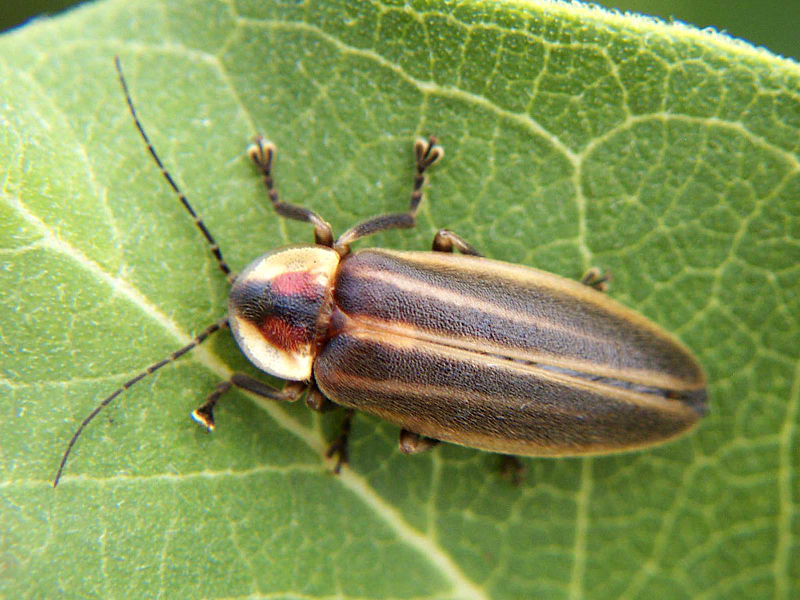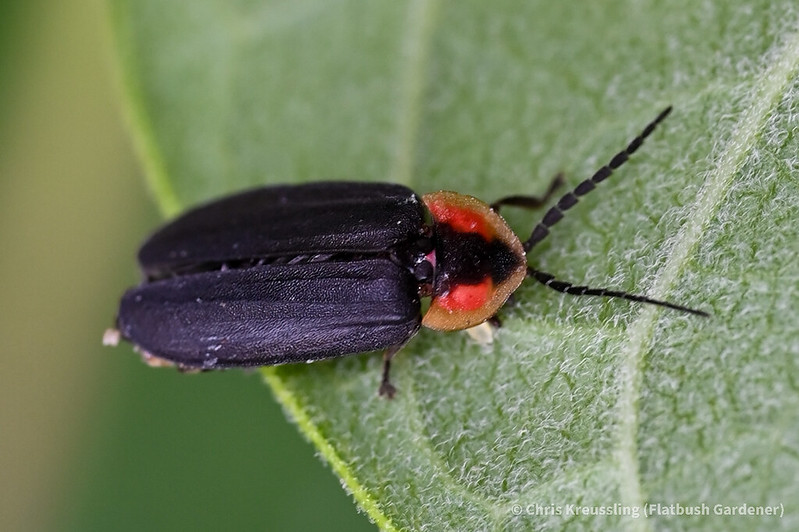Blog Widow John and I saw our first firefly of the year as we were coming home just after sunset this evening. Seemed to be only the one. I looked for others up and down the street and didn’t see any.
It’s summer.
Here’s a photo I took of the first one I saw last year. I found it on my hose reel. The date last year was June 17, so they’re right on time or a little ahead this year.

Yeah, it’s blurry and out-of-focus. I’ll get some better shots this year. I’m saving up for a good macro lens.
Lampyridae is a family in the beetle order Coleoptera, members of which are commonly called fireflies, lightning bugs, or glow worms due to their conspicuous nocturnal (or, more accurately, crepuscular) use of bioluminescence to attract mates or prey. The firefly is capable of producing a “cold light” containing no ultra violet rays, with a wavelength from 510 to 670 nanometers, pale yellowish or reddish green in color, with a lighting efficiency of 96%.
There are more than 2000 species of firefly, found in temperate and tropical environments around the world. Many species can be found in marshes or in wet, wooded areas where their larvae have more abundant sources of food.
– Firefly article on Wikipedia
I don’t know what species we have in our area. Let’s see what we can figure out. At first glance, my little guy (or gal) above looks similar to the photo of Photuris lucicrescens accompanying the Wikipedia article:

but there are also some noticeable differences:
- The eyes of my beetle are not hidden beneath the pronotum.
- The yellow margin on the prontoum is different.
- My beetle doesn’t have the center stripes down the elytra.
It’s possible that there are more than one species here in Brooklyn. BugGuide has a photo of a firefly identified as Photinus pyralis that looks exactly like my guy. I’m gonna go with that, for now, at least until I can get some better photos of the fireflies in my yard.



